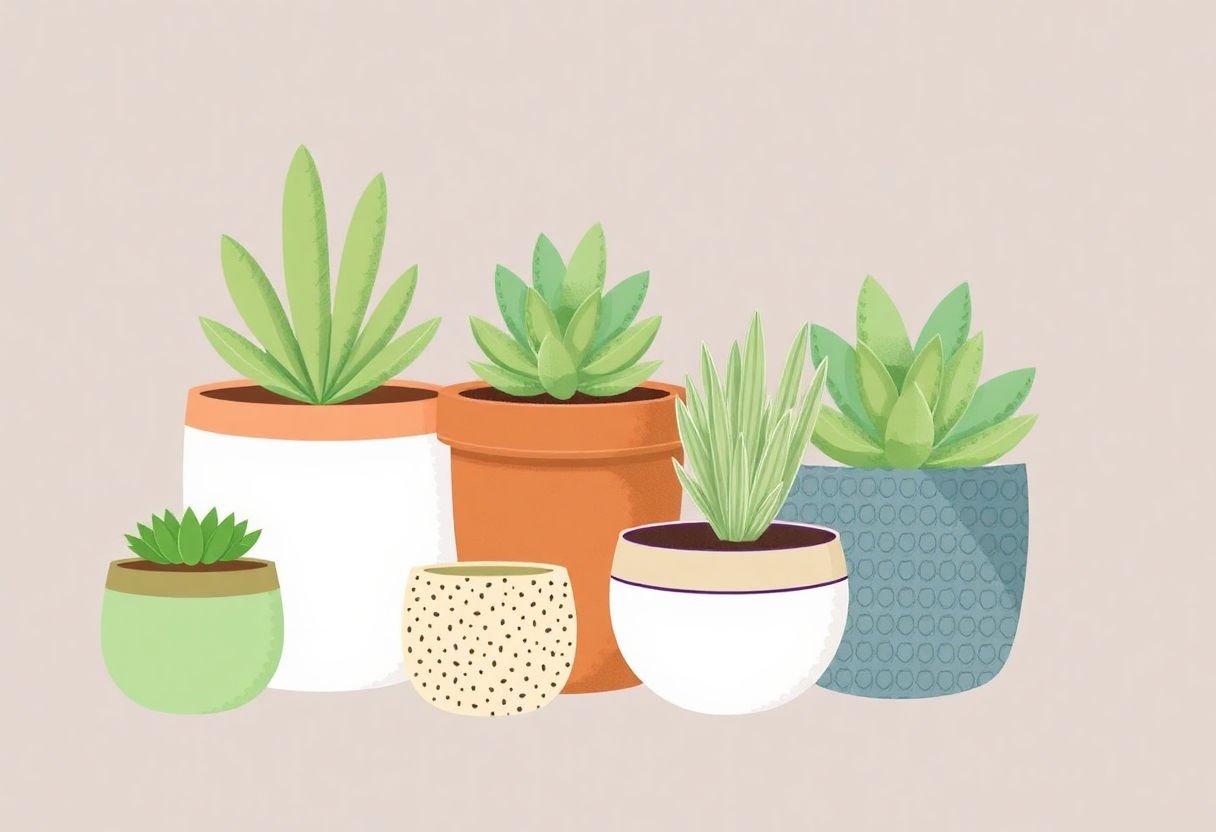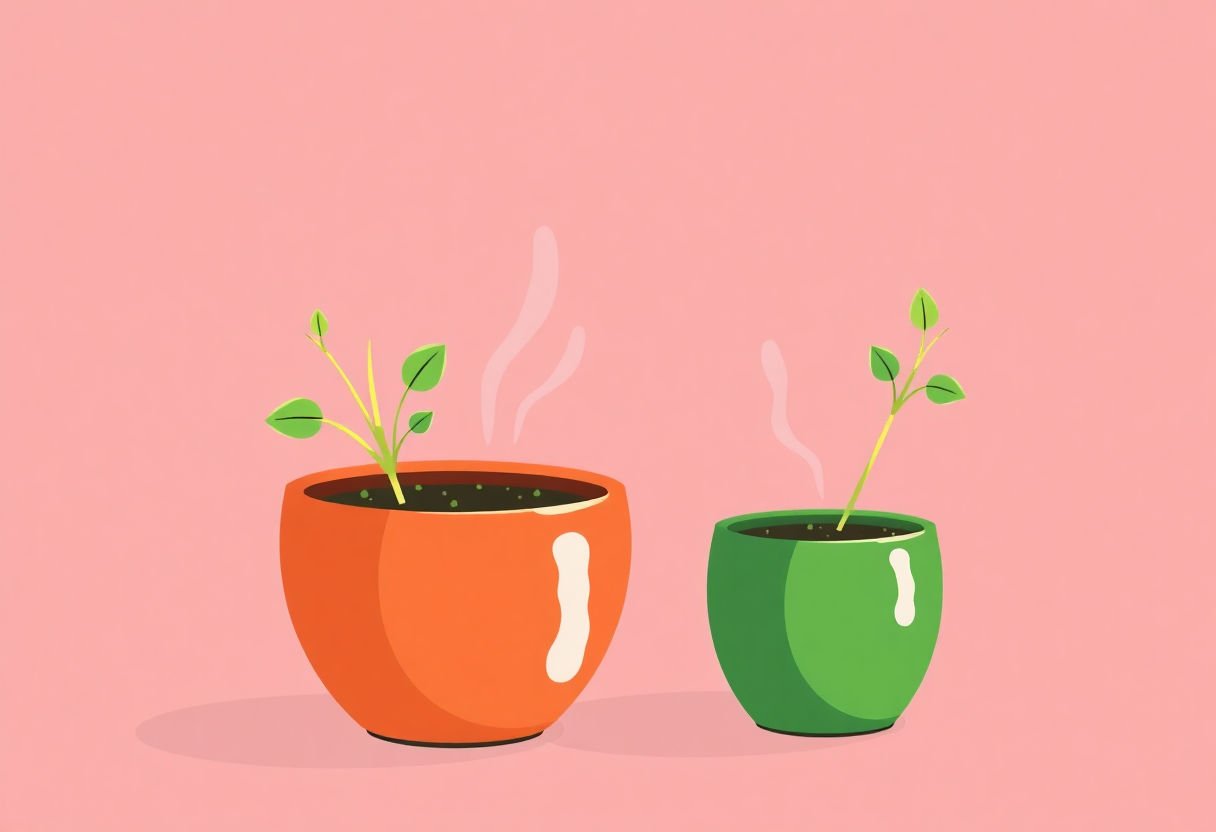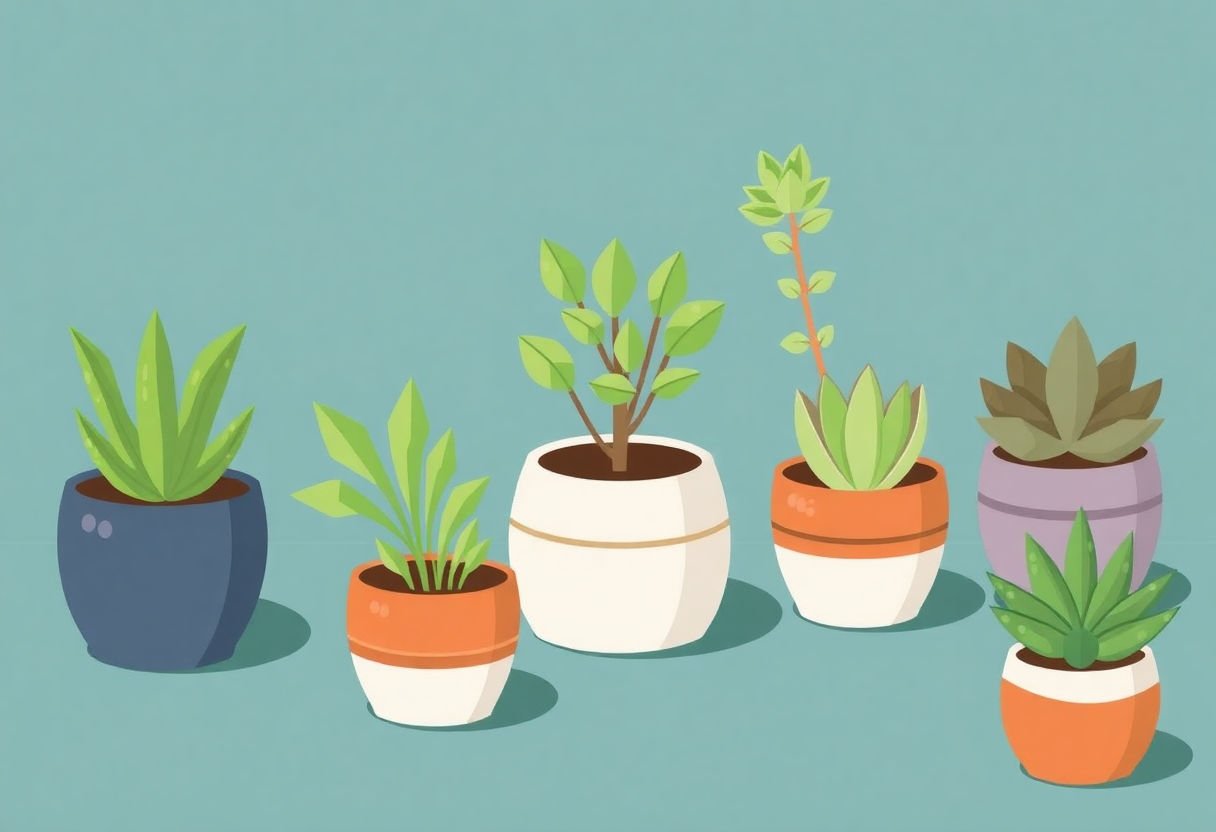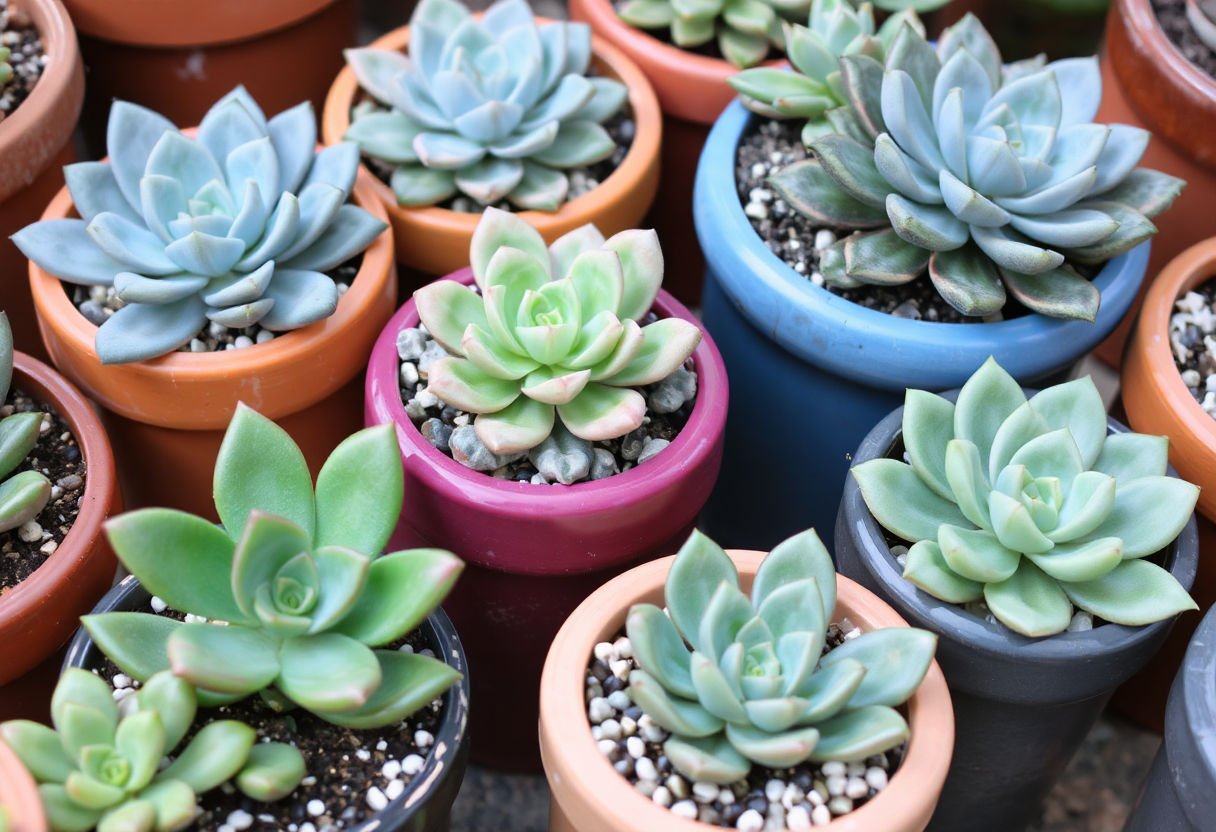Welcome to an exploration of succulent elegance—where nature meets art through the perfect pairing of plants and decorative pots. This ultimate guide provides insights into selecting the right succulent types and matching them with various pot materials. Discover design principles and practical tips to create harmonious pairings that enhance both your indoor and outdoor spaces. With detailed sections on care requirements, DIY customization, and seasonal displays, you’ll be equipped to transform any environment with stunning plant-pot combinations. Embark on this journey to cultivate beauty and vitality in your living spaces.
Key Takeaways
- Understanding the different types of succulents is essential for selecting the right pot that suits their unique characteristics.
- Choosing the correct pot material, such as ceramic or terra cotta, significantly impacts the growth and maintenance of succulents.
- Pairing succulents with decorative pots involves design principles like color and texture harmony, enhancing overall aesthetic appeal.
- Practical advice on pot selection, including size and drainage, ensures healthier and more attractive succulent displays.
- Essential care tips for succulents and maintenance of pots are crucial for sustaining vibrant and long-lasting plant-pot combinations.
Understanding Succulent Types

Succulents are renowned for their ability to thrive in diverse environments, offering a wide array of textures, shapes, and colors. Delving into the different types available can greatly enhance your pairing skills with decorative pots.
Echeveria: This popular succulent is celebrated for its rosette shape and comes in a variety of colors ranging from pale green to deep burgundy. Echeverias prefer shallow pots with excellent drainage as they are prone to root rot if overwatered.
Aloe: Known for its therapeutic properties, aloe boasts fleshy leaves with serrated edges. Ideal for deeper pots that accommodate its thick root system, aloes thrive with minimal water and direct sunlight.
Sedum: This family includes both ground-cover and upright varieties. Sedums are hardy and thrive in cooler temperatures. They are ideal for cascading over the edges of larger pots or hanging baskets, making them perfect for creating a lush, layered look.
Haworthia: Often mistaken for aloe, Haworthia features small, rosette-shaped clusters with distinctive horizontal stripes. These succulents do well in smaller pots and are perfect for indoor settings due to their low light requirements.
Understanding these types influences your potting choices by determining the necessary depth, drainage, and placement for optimal growth. Each type’s unique characteristics not only dictate their care requirements but also offer opportunities to enhance their aesthetic appeal through complementary pot selection. As these succulents vary in sunlight, water, and space needs, selecting the appropriate pot enhances their natural beauty while ensuring their longevity.
Choosing the Right Pot Material

When selecting the ideal pot material for your succulents, it is important to consider how each type influences plant health and aesthetics. Ceramic pots are a popular choice due to their decorative appeal and variety in designs. These pots often come with a glazed finish, adding a vibrant touch to any decor. However, ceramic pots may lack drainage holes, so ensure that these are present or consider adding them to prevent overwatering.
Terra cotta pots are renowned for their porous nature, which allows air and moisture to pass through the walls. This characteristic facilitates the evaporation of excess water, thus reducing the risk of root rot. Terra cotta’s earthy tone complements a rustic or natural decor style and works well in dry, arid climates where overwatering is a concern.
Metal pots bring a modern or industrial look and can be quite striking in contemporary settings. It is essential to note that metal can heat up in direct sunlight, potentially damaging your succulents’ roots. To avoid this, place metal pots in a shaded area or use them indoors where temperature fluctuations are minimal.
Each material presents distinct advantages and considerations. When choosing a pot, reflect on the environmental conditions, aesthetic appeal, and care requirements of your succulents. Combining these elements ensures a harmonious and health-promoting environment for your plants. As the renowned horticulturist Luther Burbank once said, “Flowers always make people better, happier, and more helpful; they are sunshine, food, and medicine to the soul.” The right pot can indeed enhance this sentiment by elevating the beauty and vitality of your succulents.
Design Principles for Pot Pairing

Pairing succulents with decorative pots effectively requires an understanding of several design principles that can help enhance the aesthetic appeal of your arrangements.
Color Harmony
When selecting a pot for your succulent, consider the color of both the plant and the pot. A pot’s color should complement or contrast beautifully with the succulent. For example, the vibrant greens and purples of an Echeveria can be wonderfully highlighted by a neutral, muted pot. Conversely, a brightly colored pot can add a pop of color to succulents with simple tones.
Texture Considerations
Texture plays a significant role in the overall visual impact of your plant-pot combination. Glossy-finished pots may contrast nicely against a succulent’s natural matte finish, creating visual intrigue. Alternatively, textured pots made of rough materials like terra cotta can add an earthy feel that complements the succulent’s natural growth.
Style and Theme Coordination
Aligning the style of the pot with the surrounding decor will ensure harmony in design. A minimalist, modern space might benefit from sleek, simple pot designs, whereas a bohemian setting could embrace more eclectic or rustic pot styles. This cohesion helps in creating unified visual narratives within your space.
Proportional Balance
The scale and proportion of the pot relative to the succulent are crucial. Smaller succulents benefit from smaller, delicate pots to avoid overwhelming the plant. On the other hand, larger succulents can be paired with bold, substantial pots that provide adequate presence and stability.
These design principles collectively guide the creation of aesthetically pleasing succulent and decorative pot pairings, resulting in stunning displays that enhance both plant and pot beauty.
Practical Tips for Pot Selection

Selecting the right pot is crucial for the health and aesthetic appeal of your succulents. One of the most important considerations is the size of the pot. It’s essential to match the pot size to the root system of your succulent to ensure sufficient space for growth without overwhelming the plant. Common advice suggests opting for a pot that is about 10% wider than the succulent’s diameter.
Drainage is another critical factor. Succulents are susceptible to root rot if left in standing water, so it’s vital that your pot includes drainage holes. If you choose a decorative pot without built-in drainage, consider using a nursery pot with holes inside the decorative one or adding a layer of coarse gravel at the bottom to facilitate water flow.
The style of the pot should complement the natural characteristics of the succulent. For instance, trailing succulents like “String of Pearls” can be highlighted in a hanging pot or elevated on a high shelf. Choose geometric designs to contrast the rounded forms of rosettes such as the “Echeveria.”
In climates with fluctuating temperatures, think about the thermal properties of your pot. Materials like ceramic can protect succulents from extreme temperatures, whereas metal pots might need insulation or strategic placement to avoid overheating or chilling the plant roots.
Remember, blending both functional and aesthetic aspects in your pot selection will provide a healthy environment for your succulents while enhancing the overall visual impact of your decor.
Caring for Succulents and Pots
Caring for succulents and their pots requires attention to both the plant’s health and the condition of its container. Succulents are revered for their low maintenance needs, but they do demand specific care to thrive.
Watering and Light Requirements:
- Water Sparingly: Succulents have evolved to store water in their leaves. Therefore, over-watering is a common mistake. Ensure the soil dries out completely between waterings. Use a rule of thumb: if the soil feels damp, wait to water.
- Optimal Light: These plants need plenty of light but not direct sunlight, which can cause leaf burn. Position them near windows that receive indirect sunlight or provide them with artificial grow lights if necessary.
Soil and Fertilization:
- Well-Draining Soil: Use a potting mix specifically designed for succulents, often containing sand, perlite, or a mix to enable better drainage.
- Minimal Fertilization: Fertilize sparingly during the growing season with a diluted, balanced liquid fertilizer.
Pot Maintenance:
- Drainage Holes: Ensure pots have drainage holes to prevent water accumulation, which can lead to root rot. This is crucial for the health of your succulents.
- Clean Regularly: Wipe down pots to prevent the accumulation of dust and debris. This not only keeps them looking fresh but also reduces the risk of pests.
Regularly reassess both the plant’s and pot’s conditions. A succulent might outgrow its confines; hence, consider repotting into a larger container if necessary. Caring for succulents is not complex, but consistency in following these guidelines is essential for maintaining their health and aesthetic appeal.
DIY Pot Decoration Ideas
Embarking on a DIY pot decoration journey offers a creative outlet to personalize your succulent displays, transforming ordinary pots into extraordinary artistic expressions. Here are some inspired ideas to invigorate your decor:
-
Painted Designs: Unleash your inner artist by painting your pots with bold geometric patterns, delicate florals, or abstract designs. Acrylic paints work best for their durability and ease of use. Consider using stencils or painter’s tape to achieve crisp lines and intricate patterns.
-
Decoupage Art: This technique involves gluing decorative paper or fabric onto your pot’s surface. Choose materials with complementary colors or themes that resonate with your interior design. Seal the surface with a clear adhesive to ensure your artwork withstands the elements.
-
Textured Accents: Add tactile appeal by using materials like sand, pebbles, or bark. Apply a strong adhesive to secure them onto the pot’s surface, creating a harmonious blend with the natural aesthetic of succulents.
-
Chalkboard Pots: Coat your pots with chalkboard paint to create a continuously customizable display. Write plant names, care instructions, or seasonal messages using chalk, changing them whenever inspiration strikes.
-
Upcycled Elements: Reimagine old items such as tin cans, mason jars, or teacups into unique pots. Enhance them with paint or embellishments like twine, beads, or buttons for a touch of rustic charm.
Each of these DIY ideas allows you to craft a distinctive home for your succulents, adding a personal and memorable flair to your living spaces.
Seasonal Display Suggestions

As the seasons change, the ambiance of your home should reflect the evolving colors and themes. Succulents, with their enduring nature and diverse palette, offer a perfect opportunity to enhance your decor through the year. Here are some inspirational seasonal display ideas:
-
Spring Brightness: Capture the freshness of spring by choosing pots in pastel shades or with floral patterns. Consider succulents like Echeveria and Jade Plants, whose vibrant greens and silvery hues enhance the feeling of renewal. Group them together on a sunlit window sill to invite the season’s energy indoors.
-
Summer Vibrance: Summer calls for bold and lively colors. Opt for pots in vivid yellows, blues, or terracotta to reflect the warmth of the season. Succulents like Aloe Vera and the Flaming Katy thrive in sunlight and add a touch of energy. Create a striking centerpiece for your patio table or balcony with clusters of these hardy plants.
-
Autumn Warmth: Embrace the earthy tones of fall with pots in deep oranges, browns, and reds. Succulents such as Sedum and String of Pearls with their varied textures and colors can mirror autumn foliage. Arrange them on porch steps or harvest tables, bringing warmth to the crisp days.
-
Winter Elegance: For a sophisticated winter display, select pots with a metallic sheen or in classic white. Succulents like Haworthia and Zebra Plant add architectural interest. Pair them with decorative stones or candle holders to create serene indoor landscapes that mirror the stillness of winter nights.
These seasonally inspired displays not only showcase the innate beauty of succulents but also harmonize with the mood of each season, offering a continuous connection to nature.
Conclusion
In this comprehensive guide, we explored the intricate art of pairing succulents with decorative pots, emphasizing the importance of design harmony and care requirements. By thoughtfully considering factors such as pot material, design principles, and specific care needs, you can create vibrant, thriving displays. As trends evolve, future applications may include more sustainable practices and innovative pot designs. We encourage you to experiment boldly, drawing on seasonal inspiration and DIY creativity to enhance your home’s aesthetic. Cherish the process as you cultivate an ever-changing masterpiece of nature and design.
Frequently Asked Questions
What type of pots are best suited for succulents?
Succulents thrive best in pots with good drainage, such as those made of terra cotta or ceramic materials. These materials allow excess water to evaporate more easily, reducing the risk of overwatering and root rot.
How do I choose the right pot size for my succulent?
The pot size should be slightly larger than the succulent’s root system, allowing for growth while preventing excess moisture retention. A suitable pot size promotes healthy root development and helps maintain the ideal moisture balance for your succulent.
Can succulents grow in pots without drainage holes?
While it’s possible for succulents to grow in pots without drainage holes, it’s important to water them sparingly and ensure the soil has excellent drainage. Monitoring watering frequency and choosing the right soil mix are crucial to prevent waterlogging.
What kind of soil should I use for my potted succulents?
Succulents require a well-draining soil mix, often referred to as cactus or succulent soil. This type of soil is typically a blend of potting soil, sand, and perlite, promoting optimal water drainage and aeration.
How should I maintain both the succulent and decorative pot over time?
Regularly check your succulents for signs of stress, such as leaf discoloration or wilting, and adjust watering as needed. To keep decorative pots looking vibrant, gently clean their surfaces with a soft cloth to remove dust and prevent the buildup of mineral deposits.
